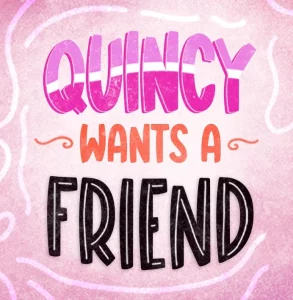“From Feelings to Friendships: Social-Emotional Stories for Preschoolers”

Preschool is a crucial time for children to develop their social-emotional skills. It is during this period that they start to understand and express their feelings, as well as learn how to interact with their peers. One effective way to foster these skills is through the use of social-emotional stories. These stories not only teach children about emotions but also help them navigate friendships and develop empathy. Let's explore how social-emotional stories can benefit preschoolers.
Emotional intelligence is an essential skill that helps children recognize and manage their emotions. Through social-emotional stories, preschoolers can learn to identify different emotions – such as happiness, sadness, anger, and fear – and understand what causes them.
For example, a story about a character who feels sad because their pet is lost can help children understand that certain events can trigger sadness. By connecting with the character's emotions, preschoolers can start building their emotional vocabulary and become more aware of their feelings.
In addition to understanding their own emotions, social-emotional stories can also teach preschoolers about empathy. These stories often feature characters who experience different emotions and situations. By reading about the challenges and feelings of others, children can develop a sense of empathy and learn how to relate to their peers.
For instance, a story about a character who is scared to start a new school can help preschoolers understand and empathize with the nervousness that their classmates might feel in similar situations. Empathy is a crucial skill for building positive relationships, and social-emotional stories can be a powerful tool in developing it.
Friendships play a significant role in a preschooler's life. Social-emotional stories can help children navigate the complex dynamics of friendships and teach them how to handle conflicts.
Many of these stories focus on themes like sharing, taking turns, and resolving misunderstandings. By reading about how characters face and resolve conflicts, preschoolers can gain insights on how to manage their own relationships.
Moreover, social-emotional stories can also promote positive behavior in preschoolers. These stories often include characters who display kindness, honesty, and other desirable traits. By reading about these characters, children can learn about the value of positive behaviors and emulate them in their own lives.
For example, a story about a character who helps a friend in need can inspire preschoolers to be more helpful and compassionate towards others. By highlighting positive traits and behaviors, social-emotional stories contribute to the development of a positive and inclusive classroom environment.
In conclusion, social-emotional stories are a valuable tool for teaching preschoolers about emotions, empathy, friendships, and positive behavior. Through these stories, children can learn to identify and manage their feelings, develop empathy towards others, navigate the complexities of friendships, and cultivate positive behaviors.
Preschool is a critical time for social-emotional development, and these stories can provide a foundation for children to grow into emotionally intelligent and socially skilled individuals. So, let's introduce social-emotional stories into the preschool curriculum and help our little ones navigate their emotions and relationships with confidence and empathy.